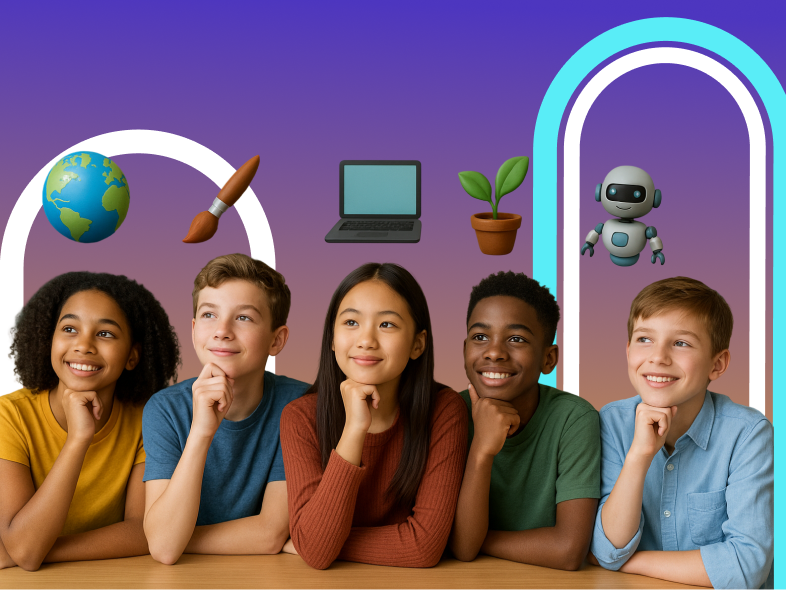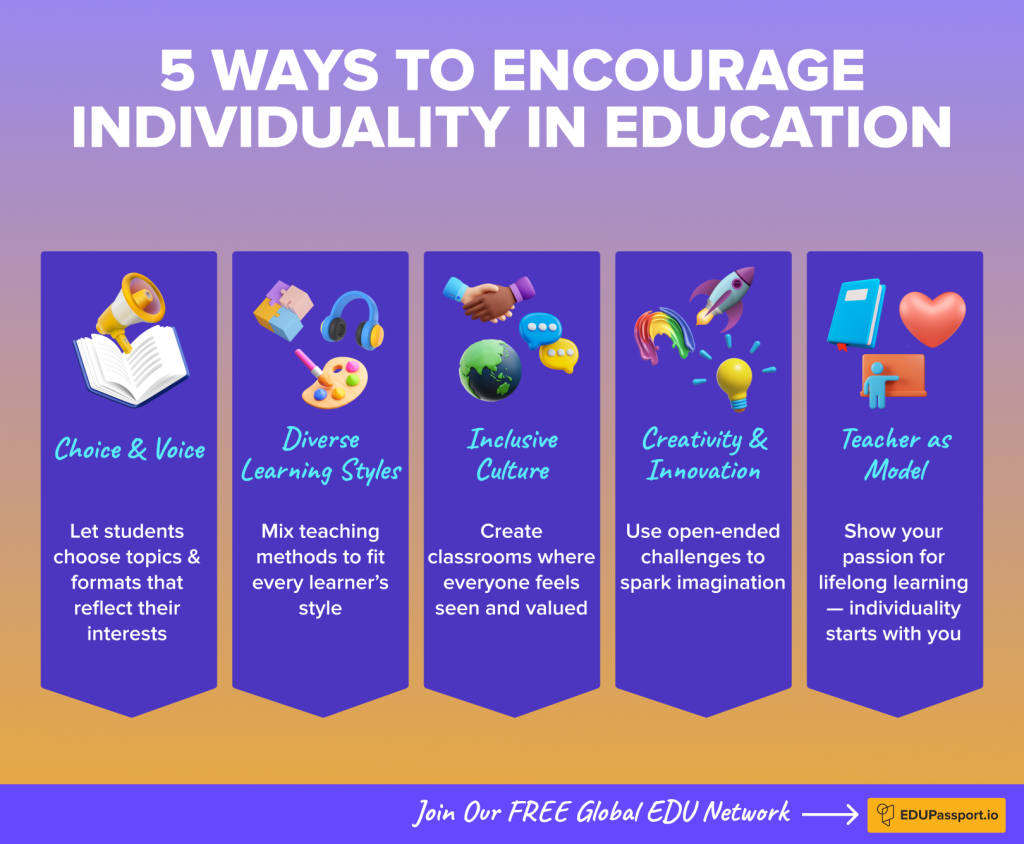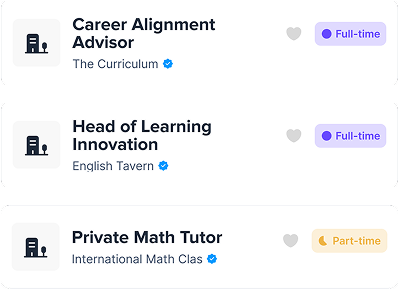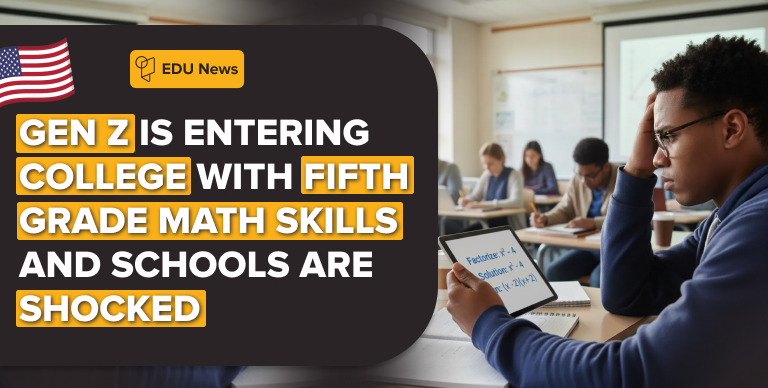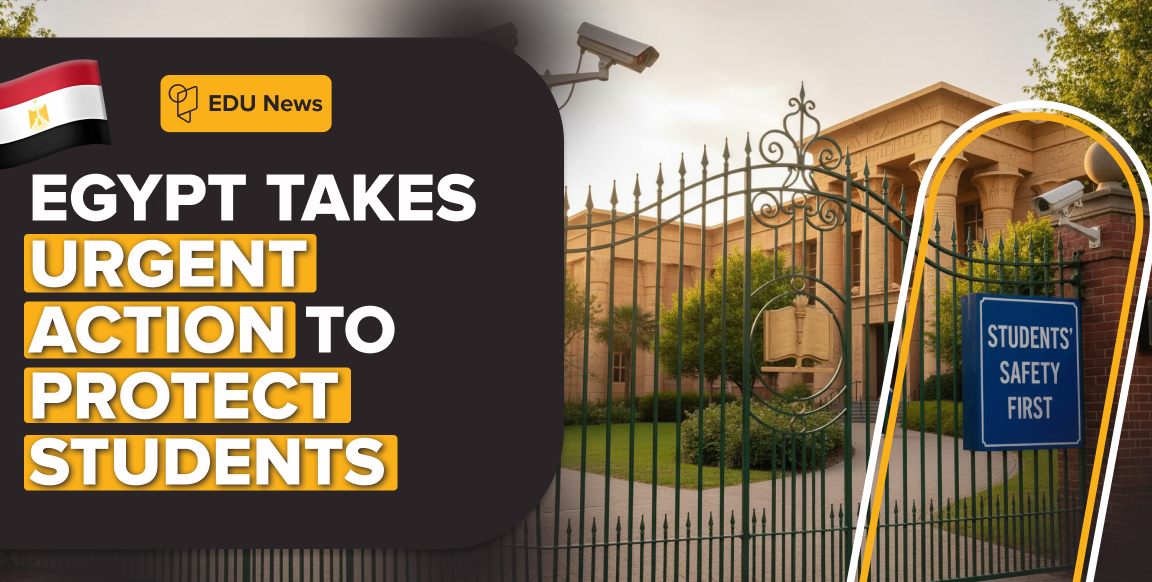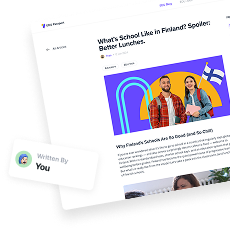What Individuality Really Means in Education
Individuality in education is about more than just “being different.” It’s about recognizing that every learner brings a unique mix of strengths, stories, and ways of thinking. The best education systems celebrate that.
Traditional schooling often takes the opposite route. Rigid rules, standardized tests, and uniform expectations can dim curiosity and suppress creativity. The outcome? Students who stop seeing learning as something that belongs to them.
So, how do we flip that script? Let’s explore how individuality in education turns classrooms into places of discovery, confidence, and growth.
Why Individuality Matters in School

1. It builds self-awareness and confidence
When students express their individuality, they begin to understand their strengths and passions. Whether it’s joining the school choir, coding their first app, or debating ideas that matter to them, they start discovering who they are.
2. It sparks creativity and innovation
Individuality encourages original thinking. When students feel safe to explore ideas freely, they produce creative work that reflects their personalities. Art, science, technology, and writing thrives on difference.
3. It strengthens empathy and inclusion
When students learn to value their own uniqueness, they also learn to appreciate others’. Classrooms that celebrate individuality become microcosms of global citizenship, where diversity is not just accepted but respected.
How to Encourage Individuality in Education
1. Give students voice and choice
Offer options in projects, topics, and methods. When students choose how to learn, they take ownership. Whether it’s creating a podcast, designing an infographic, or conducting a mini research project, choice fuels engagement.
2. Embrace diverse learning styles
Not everyone learns in the same way, and that’s the beauty of it. Combine hands-on activities, digital tools, group work, and independent study to support varied learners. Track progress based on growth, not grades.
3. Build an inclusive classroom culture
Make your classroom a safe zone for every voice. Incorporate cultural exchanges, peer discussions, and collaborative projects. When students feel they belong, they learn better and care more.
4. Foster creativity and curiosity
Design open-ended challenges where multiple answers are possible. Encourage brainstorming, prototyping, and reflection. Praise original thinking and bold attempts, not just perfect results.
5. Lead by example
Teachers are lifelong learners too. Share your passions, your process, and yes, even your mistakes. When students see their teachers learning with enthusiasm, they learn to love learning themselves.
The Big Picture
Encouraging individuality in education doesn’t mean rejecting structure. It means making space within it for every learner to bring their full self. When students feel seen and supported, they grow into confident, compassionate, and creative humans, exactly what the future needs.
Want to see how educators around the world are redefining individuality and innovation in learning?
👉 Sign up for free at EDU Passport, your hub for global education insights, collaboration, and community.





